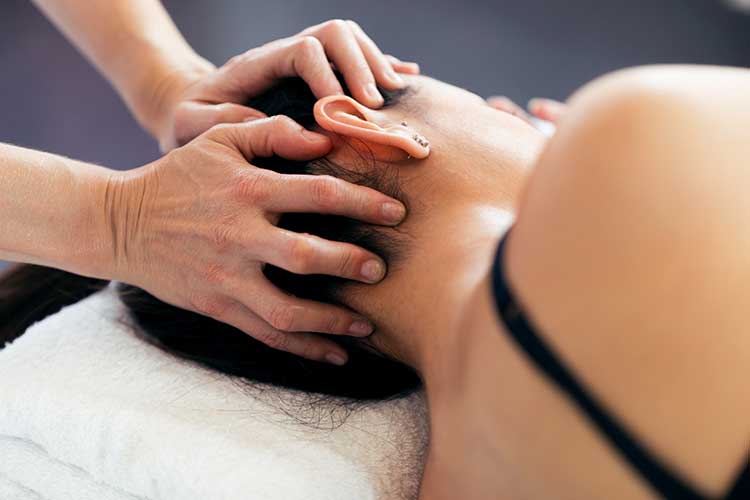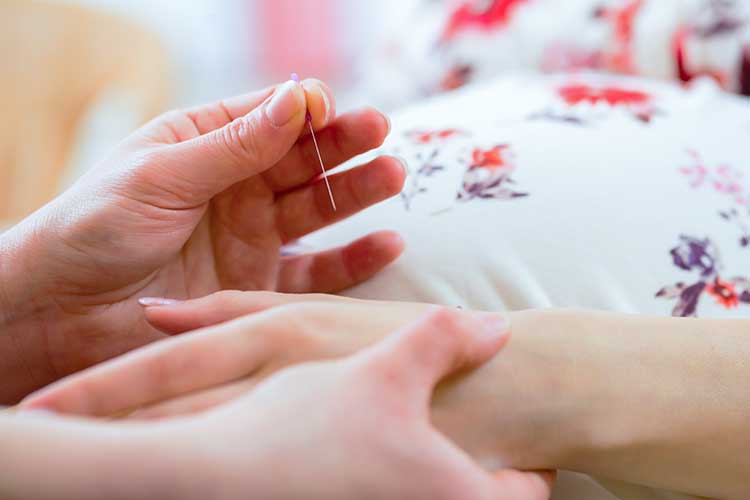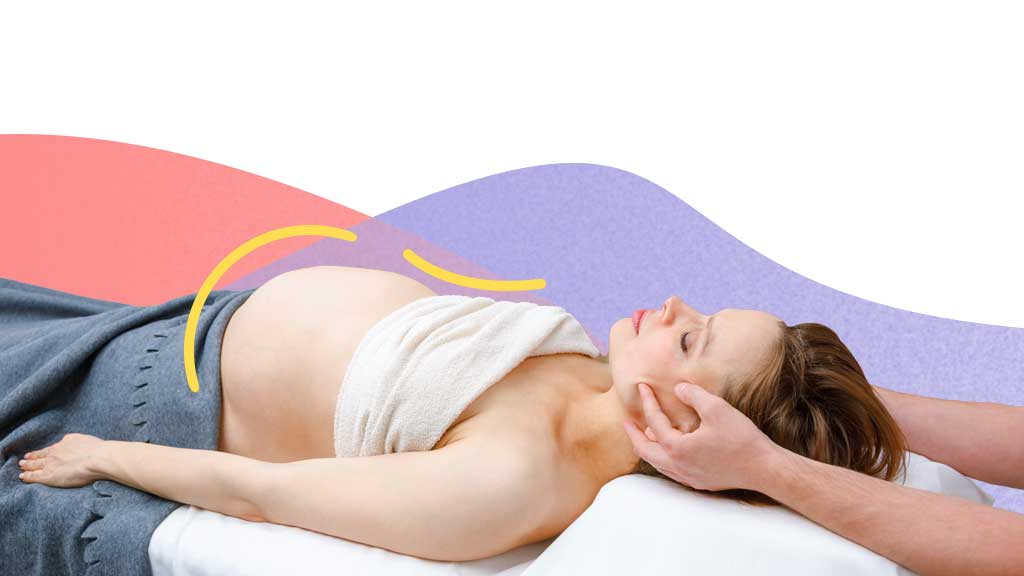Complementary and alternative forms of medicine are becoming increasingly popular - not only with pregnant patients but also with midwives and maternity nurses, who are becoming more appreciative of their value.
However, with so many specialties on offer, it can be difficult to keep up to date with current knowledge and identify which therapies are safe for use during pregnancy and which could potentially cause harm.
For many years now, the complementary and alternative medicine (CAM) movement has been driven by consumer demand, leaving midwives with the task of developing comprehensive evidence-based knowledge of the potential benefits and risks of some of the more popular therapies. As Tiran (2006) notes, it’s not enough to just say that a particular therapy is effective - it must also be proven to be safe before it can be used in maternity care.
So, what do these therapies that lie outside mainstream medicine actually consist of?
Strouss et al. (2014) suggest that although there are a wide range of therapies that patients can use either independently or alongside conventional care, they can broadly be classified into the following five categories:
- Alternative medicine practices, e.g. traditional Chinese medicine, acupuncture and homeopathy
- Mind-body interventions, e.g. meditation, yoga, guided imagery and prayer
- Biologic-based therapies, e.g. herbal medicines and dietary supplements
- Manipulative and body-based therapies, e.g. osteopathic and chiropractic manipulation and massage therapy
- Energy healing therapies, e.g. tai chi or Reiki.
(Strouss et al. 2014)

How Common Are Complementary Therapies?
According to the Royal College of Midwives (2020), it’s thought that between 25 and 70% of people use complementary therapies at some point during their pregnancies.
Common reasons for use include:
- Labour induction
- Nausea and vomiting
- Enhanced relaxation
- Relief from back pain
- Mal-presentation
- Perineal discomfort
- Postnatal depression
- Lactation problems.
(Hall et al. 2012)
Natural is Not Synonymous With Safe
Despite the popularity of many forms of CAM, midwives remain at risk of overstepping their boundaries of professional accountability if they have not undertaken relevant training (RCM 2020).
Although it’s tempting to assume that natural is synonymous with safe, this is not necessarily true, and many of the less well-known CAM therapies have little or no evidence-based research to support their use.
Before a midwife can prescribe, advise or endorse the use of CAM in pregnancy, many considerations must be taken into account, especially for those therapies with a pharmacological action that may interact with prescribed medications (RCM 2020).
For example, for each therapy it’s important to know:
- The mechanism of action
- Indications, contraindications and precautions
- Potential side-effects and complications.
As Strouss et al. (2014) suggest, with such a wide array of therapies available - each of which carries a unique set of risks and benefits - it can be difficult for maternity staff to maintain sufficient knowledge to safely guide or advise their patients. That being said, many patients simply choose not to tell their care provider that they are using CAM therapies at all, for fear of judgement or discouragement (Warriner et al. 2014).
Why is Complementary and Alternative Medicine So Popular?
One of the reasons complementary therapies are becoming so popular is that they offer a holistic approach to pregnancy, allowing patients to maintain personal control outside of the biomedical model. Not all women have an equal interest or ability to access these therapies, however.
For example, research conducted by Hall and Jolly (2014) revealed that CAM users differed significantly from non-CAM users in their level of education, parity and previous use of CAM before pregnancy. Vitamins, massage therapy and relaxation techniques seemed to be the most popular choices, but just as other researchers discovered, approximately one-third of patients chose not to disclose their use of CAM to their midwife.
Strouss et al. (2014) also note the popularity of CAM in pregnancy, suggesting that 50 to 70% of pregnant patients studied were found to use at least one type of CAM. Despite this, few patients were asked about alternative therapies by their care team, and once again, one-third chose not to disclose that they sought help and support outside of the traditional healthcare model.
Which Therapies do Midwives Recommend?
Based on research conducted by Mollartet al. (2018), the top five CAM therapies recommended by midwives were:
- Acupuncture (65.7%)
- Acupressure (58.1%)
- Raspberry leaf (52.5%)
- Massage (38.9%)
- Calmbirthing or hypnobirthing (35.7%).

Midwives were also more likely to discuss alternative approaches to pregnancy care if they had used CAM themselves or were less experienced in their role. Most midwives seemed to take an open-minded and positive approach to the use of CAM because they considered the therapies to be philosophically congruent, providing safe alternatives to medical interventions and supporting the patient's autonomy (Hall et al. 2012).
Given the rise in popularity of CAM in recent years, many midwives are now asking if knowledge of complementary therapies should be included within basic midwifery training. As Hall et al. (2015) suggest, although midwives are usually supportive, how they communicate with patients about the safe use of alternative therapies has received little attention. Lack of knowledge, language barriers and workplace constraints mean that in most cases, it remains up to patients themselves to initiate any CAM-based conversations.
Conversations About Complementary and Alternative Medicine
As Strouss et al. (2014) discovered, while many healthcare providers were supportive of CAM, very few recommended it. In fact, within conventional healthcare settings, CAM therapies were only recommended about 15% of the time, while family and friends recommended CAM almost three-quarters of the time.
These findings seemed to be typical across a range of research studies, which found that pregnant patients often relied on advice from non-healthcare providers such as friends and relatives when deciding to use complementary or alternative therapies.
Conclusion
As Gaffney and Smith (2004) note, there is a need for much more research before complementary therapies can be considered safe for use during pregnancy. To date, there is still relatively little high-quality evidence-based research on the safety and efficacy of many of these therapies, yet, the use of CAM in pregnancy clearly remains a growing trend that midwives are trying to embrace.
Topics
References
- Gaffney, L & Smith, C 2004, 'Use of Complementary Therapies in Pregnancy: The Perceptions of Obstetricians and Midwives in South Australia', The Australian and New Zealand Journal of Obstetrics and Gynaecology, vol. 44. no. 1, viewed 24 November 2023, https://obgyn.onlinelibrary.wiley.com/doi/abs/10.1111/j.1479-828X.2004.00161.x
- Hall, H, McKenna, L & Griffiths, D 2012, 'Midwives’ Support for Complementary and Alternative Medicine: A Literature Review', Women and Birth, vol. 25, no. 1, viewed 24 November 2023, https://www.sciencedirect.com/science/article/abs/pii/S1871519210000880?via%3Dihub
- Hall, H & Jolly, K 2014, 'Women's Use of Complementary and Alternative Medicines During Pregnancy: A Cross-sectional Study, Midwifery, vol. 30, no. 5, viewed 24 November 2023, https://www.sciencedirect.com/science/article/abs/pii/S0266613813001745?via%3Dihub
- Hall, H, Griffiths, D & McKenna, L 2015, 'Complementary and Alternative Medicine: Interaction and Communication Between Midwives and Women', Women and Birth, vol. 28, no. 2, viewed 24 November 2023 https://www.sciencedirect.com/science/article/abs/pii/S1871519214001267?via%3Dihub
- Mollart, L, Skinner, V, Adams, J & Foureur, M 2018, 'Midwives’ Personal Use of Complementary and Alternative Medicine (CAM) Influences Their Recommendations to Women Experiencing a Post-date Pregnancy', Women and Birth, vol. 31, no. 1, viewed 24 November 2023, https://www.sciencedirect.com/science/article/abs/pii/S1871519217300483?via%3Dihub
- Royal College of Midwives 2020, Position Statement Complementary Therapies and Natural Remedies, RCM, viewed 24 November 2023, https://www.rcm.org.uk/media/4144/complementary-therapies-and-natural-remedies-2020_3.pdf
- Strouss, L, Mackley, A, Guillen, U, Paul, D & Locke, R 2014, 'Complementary and Alternative Medicine Use in Women During Pregnancy: Do Their Healthcare Providers Know?', BMC Complementary and Alternative Medicine, vol. 14, no. 1, viewed 24 November 2023, https://link.springer.com/article/10.1186/1472-6882-14-85
- Tiran, D 2006, 'Complementary Therapies in Pregnancy: Midwives’ and Obstetricians’ Appreciation of Risk', Complementary Therapies in Clinical Practice, vol. 12, no. 2, viewed 24 November 2023, https://www.sciencedirect.com/science/article/abs/pii/S1744388105001179?via%3Dihub
- Warriner, DS, Bryan, KK & Brown, A 2014, 'Women's Attitude Towards the Use of Complementary and Alternative Medicines (CAM) in Pregnancy', Midwifery, vol. 30, no. 1, viewed 24 November 2023, https://www.sciencedirect.com/science/article/abs/pii/S1744388105001179?via%3Dihub
 New
New 
